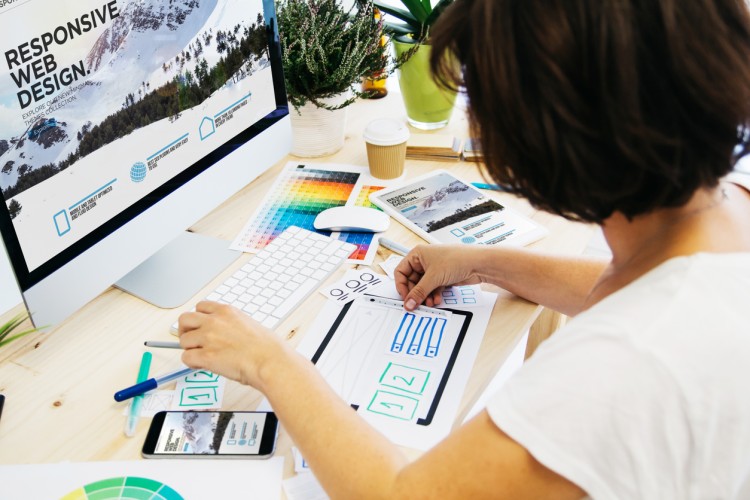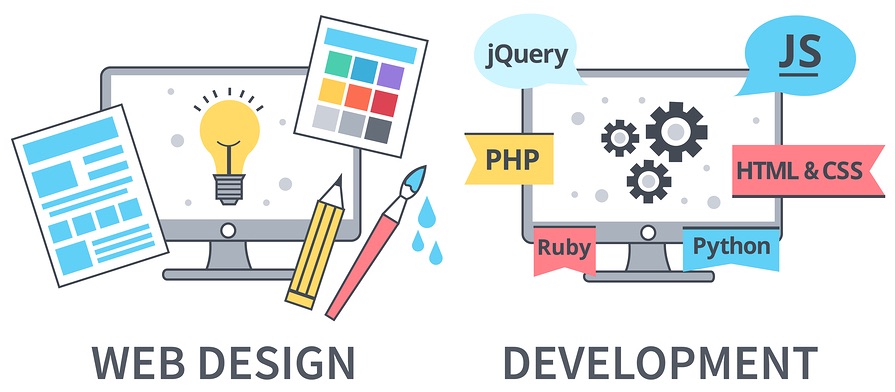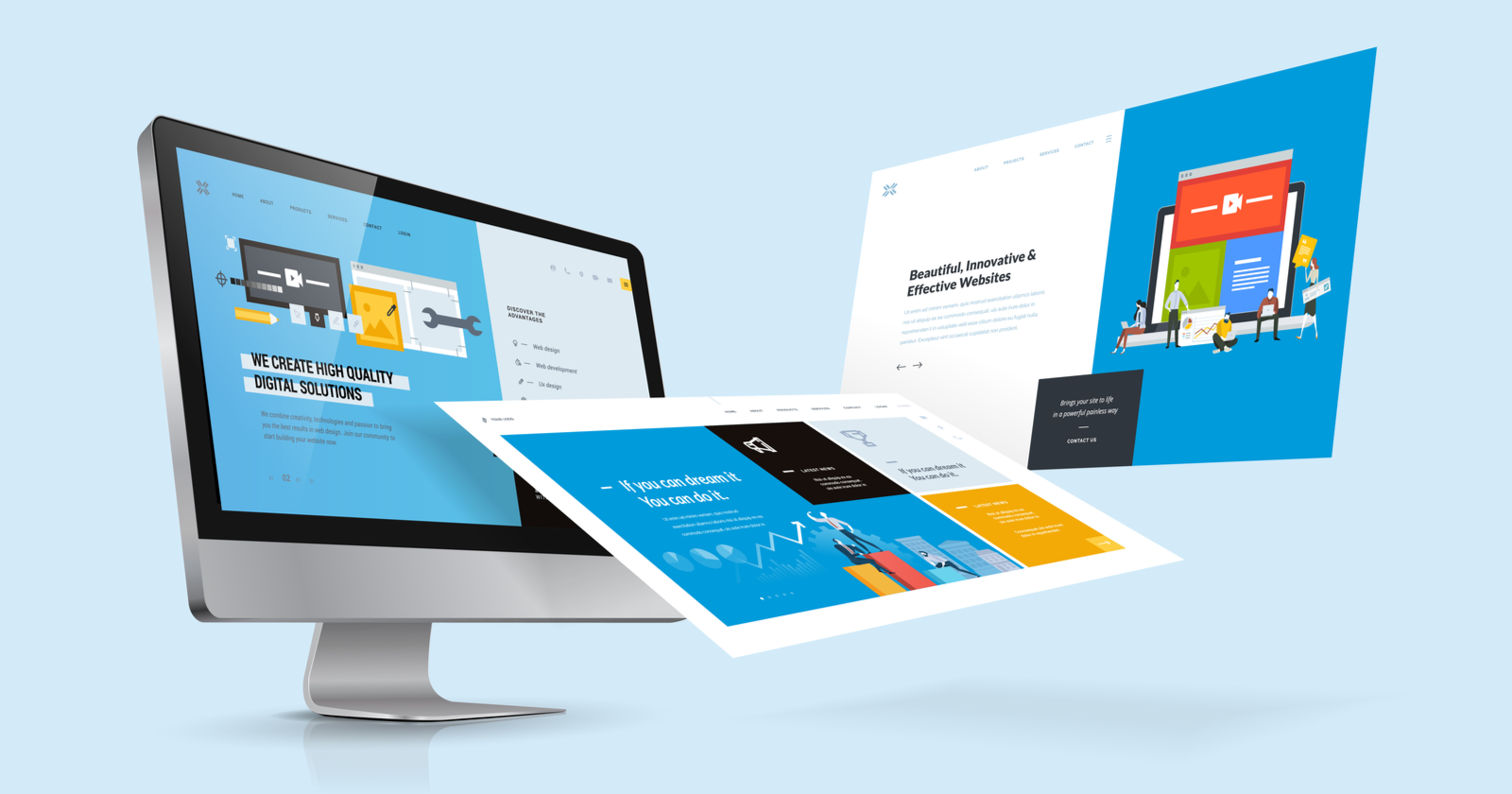Discover why visual hierarchy in website design counts for user experience
Exploring the Different Kinds Of Website Design and Their Unique Advantages
The landscape of Web design includes a range of designs, each offering unique advantages that satisfy different user requirements. Minimal and level designs stress clarity, while receptive and worldly styles enhance flexibility across devices. Typography-driven and illustrative approaches intend to boost interaction and psychological resonance. Understanding these varied types can substantially influence individual experience and brand perception. What exists under the surface area of these layout selections?
Minimalist Web Style

Minimalist Web layout commonly incorporates a restricted shade palette and simple typography, which not just improves looks but likewise enhances brand name identification. The decreased complexity can lead to quicker filling times, further boosting individual fulfillment. In addition, by lessening visual mess, users can engage with web content better, leading to improved understanding and retention. Generally, minimalist website design cultivates a smooth individual experience, making it a prominent option for brands aiming to convey quality and expertise in their on-line presence.
Responsive Web Design
Receptive website design has ended up being necessary in today's digital landscape, making certain mobile compatibility for users throughout different devices. This strategy greatly boosts user experience by offering seamless navigation and access, regardless of display size. As even more people access the Web on tablet computers and mobile phones, the value of responsive design continues to expand.

Mobile Compatibility Importance
As smart phone usage remains to increase, guaranteeing websites work with various screen sizes has actually become necessary for effective interaction and involvement. Mobile compatibility, typically accomplished with receptive website design, permits websites to adapt effortlessly to smart devices, tablets, and various other devices. This adaptability not only gets to a more comprehensive audience but likewise improves brand credibility. An internet site that operates well on smart phones reflects professionalism and trust and focus to customer needs. In addition, internet search engine focus on mobile-friendly sites in their rankings, making compatibility a crucial element for on the internet presence. By buying mobile compatibility, organizations can enhance their electronic existence and accommodate the growing variety of individuals that access information on the go. Focusing on mobile-responsive layout is important in today's electronic landscape.
Improved Individual Experience

Flat Design
Flat design is a minimal technique to website design that highlights simplicity and clearness. By eliminating three-dimensional aspects such as shadows, slopes, and appearances, level design produces an aesthetically enticing interface that prioritizes web content and performance. This design advertises an intuitive navigating experience, as individuals can rapidly recognize crucial features and actions without interruption.
One of the primary advantages of level layout is its responsiveness throughout various tools and screen sizes. Its uncomplicated formats and clean lines adapt perfectly, ensuring a constant experience for customers on mobile, tablet, or desktop systems. Additionally, level design frequently includes strong shades and typography, boosting visual effect and brand name acknowledgment.
The simplicity inherent in flat style leads to quicker filling times, which contributes positively to user contentment. In general, level design remains a preferred choice for modern-day Web advancement, aligning with modern visual preferences while supplying superb use
Product Style
Material Design represents a style language created by Google that concentrates on producing a user-friendly and cohesive individual experience across digital platforms. This method highlights the use of grid-based designs, receptive animations, and deepness impacts such as illumination and shadows, which help to create a sense of hierarchy and spatial connections. By mimicking the physical globe, Material Style permits individuals to connect with electronic user interfaces in a more interesting and all-natural manner.
One of the vital advantages of Product Layout is its versatility throughout various devices and screen dimensions, guaranteeing a regular experience for users. Additionally, it advertises a clear visual language that boosts functionality, making it simpler for users to browse complex applications. The unification of lively colors and vibrant typography likewise plays a necessary role in attracting attention to vital aspects, thereby improving total customer interaction - website development. Subsequently, Material Design has ended up being a prominent selection among developers seeking to produce visually appealing and functional web sites
Typography-Driven Layout
Typography-Driven Design focuses on the calculated use of kind to improve the visual and useful aspects of a web site. This layout approach prioritizes typefaces, font sizes, spacing, and pecking order to produce aesthetic passion and overview customer experience. By thoroughly choosing typography, designers can communicate brand name identification and stimulate feelings, making the web content extra interesting and easily accessible.
Efficient typography enhances readability and usability, ensuring that customers can conveniently soak up and browse the site details. The right mix of kind can likewise establish a clear aesthetic power structure, enabling individuals to rapidly identify key messages and phones call to action.
A typography-driven strategy can be adapted to different gadgets, ensuring consistency throughout platforms. This flexibility is essential in today's multi-device landscape, where customer experience is vital. Inevitably, Typography-Driven Layout serves not just as an artistic choice yet likewise as a functional aspect that considerably impacts an internet site's efficiency.
Illustratory Website Design
Illustratory Web design uses visual narration methods that can significantly enhance individual engagement. By integrating one-of-a-kind pictures, web sites can create an unforgettable brand name identity that reverberates with their target market. This technique not only astounds visitors however also connects messages in an aesthetically compelling way.
Aesthetic Narration Methods
A multitude of Web designers employ visual storytelling methods to create immersive and engaging customer experiences. This method incorporates typography, format, and imagery to narrate a tale that reverberates with customers on a psychological degree. By incorporating compelling visuals, designers can successfully share messages and stimulate sensations, assisting site visitors through useful link a brand's journey. Infographics, animations, and interactive aspects serve to enhance narratives, making complex details extra accessible and unforgettable. Additionally, aesthetic narration can establish a natural brand identity, as regular images and styles reinforce core worths and messages. Inevitably, this method not only captivates customers however also cultivates a much deeper connection with the web content, urging expedition and retention. Via proficient application, visual narration transforms typical Web experiences into significant and dynamic communications.
Enhancing User Involvement
Effective website design substantially improves customer engagement by leveraging illustratory elements that draw attention and foster interaction. Illustrations can simplify intricate principles, making them much more approachable and memorable for customers. They damage the dullness of text-heavy pages, creating aesthetic breaks that invite exploration. On top of that, distinct illustrations can evoke feelings, urging customers to attach with the web content on a much deeper level. Interactive aspects, such as computer animations or float effects, can likewise improve interaction by welcoming users to participate proactively rather than passively eating information. This method not only keeps site visitors on the website longer but additionally increases the possibility of return gos to. Inevitably, reliable illustratory website design changes the individual experience, making it more impactful and delightful.
Branding With Illustration
Aesthetic aspects play a substantial function in forming a brand's identification, and images are an effective tool in this respect. Illustrative Web style permits brand names to share their unique character and worths with custom art work. This approach cultivates a deeper psychological connection with the target market, enhancing memorability and interaction. By incorporating pictures, brand names can differentiate themselves in a jampacked market, developing an unique aesthetic narrative that resonates with their target group. Additionally, images can make and streamline complicated ideas web content much more available, properly communicating messages in an appealing fashion. In general, branding with image not just enriches the individual experience however additionally strengthens brand acknowledgment, making it a beneficial strategy for services intending to look here develop a strong on the internet visibility.
Regularly Asked Questions
How Do I Select the Right Website Design Kind for My Company?
To select the appropriate website design kind for a business, one must analyze goals, target audience, and sector criteria. Evaluating user experience and functionality will guide the selection process for suitable involvement and performance.
What Devices Are Ideal for Developing Various Website Design Styles?
Popular devices for developing varied website design styles include Adobe XD, Figma, Sketch, and WordPress. Each offers one-of-a-kind attributes customized to different design needs, enabling developers to construct aesthetically appealing and practical sites successfully.
Just How Much Does Expert Web Design Normally Price?
Specialist website design typically sets you back between $2,000 and $10,000, depending upon intricacy, features, and developer expertise. Customized remedies and continuous upkeep might enhance expenditures, while layouts can supply even more affordable options for simpler tasks.
Can I Integrate Numerous Website Design Keys In Efficiently?
Yes, incorporating numerous website design types can be effective. By incorporating components from various styles, developers can create special, appealing customer experiences that deal with varied target markets while enhancing performance and visual charm.
Just How Do Style Trends Influence Customer Experience and Involvement?
Style trends considerably affect customer experience and engagement by boosting visual charm, improving navigating, and fostering emotional links - website development. Staying updated with patterns look what i found enables designers to create intuitive user interfaces that resonate with users and urge prolonged interactions
Level and minimalist styles emphasize clearness, while receptive and worldly layouts enhance flexibility throughout devices. It may seem counterintuitive, minimal Web style stresses simpleness to enhance user experience. Responsive Web layout plays an important role in improving customer experience by ensuring that a website adjusts flawlessly to different screen dimensions and tools. Flat design is a minimalist strategy to Web design that emphasizes simpleness and quality. Material Layout stands for a design language developed by Google that focuses on creating a user-friendly and natural user experience throughout electronic platforms.